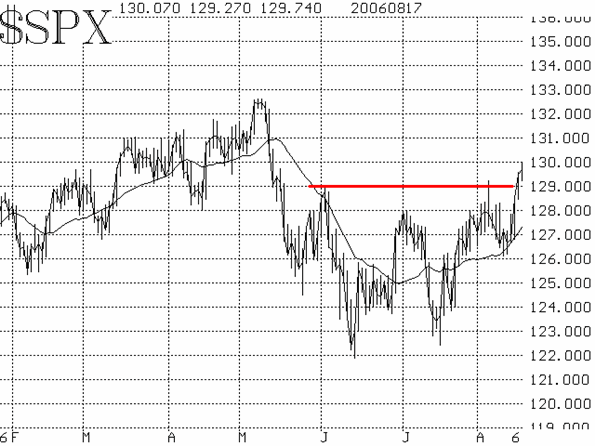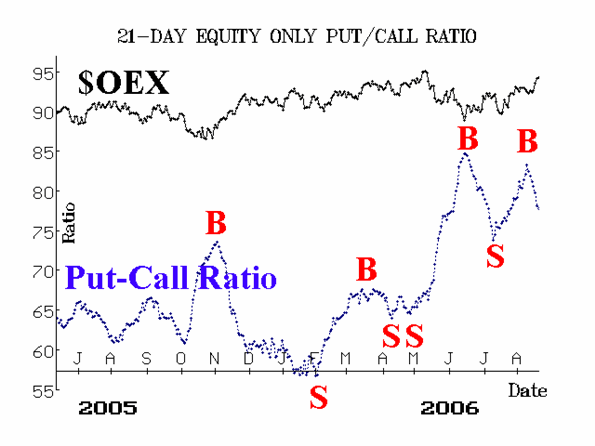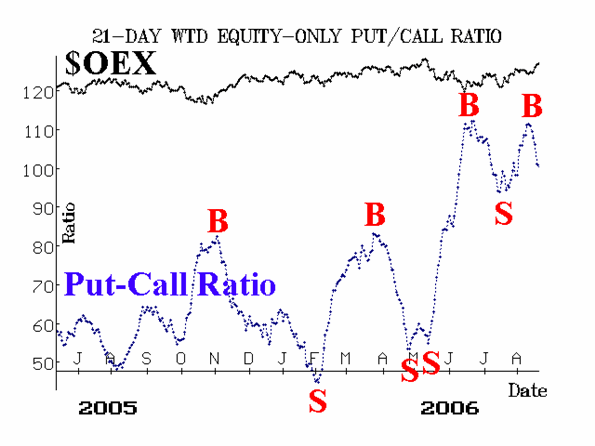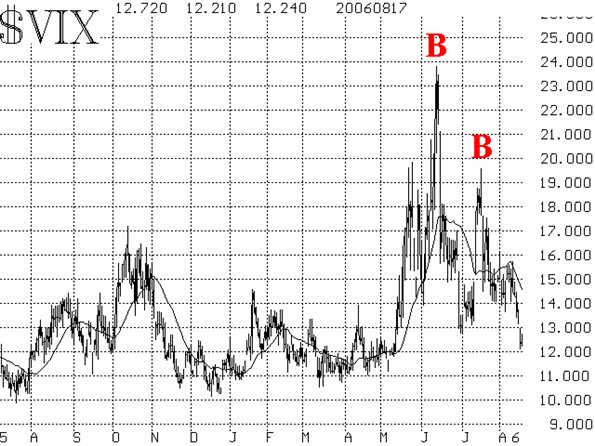The market has had a very bullish week. Several theories have been floated as to why -- from the benign inflation data (that helped, but certainly wasn't worth the entire move) to option expiration (another positive factor, to be sure), not to mention general short covering -- both in stocks and call options. In any case, $SPX has overcome both the 1280 and the 1290 resistance levels while the technical indicators have joined in a positive confluence. Furthermore, $SPX has risen above the 100-day moving average -- an average that had contained previous rally attempts over the past month or so.
In retrospect, the various technical indicators gave buy signals in June and July, but the price action was so poor at the time, that they didn't really seem like indicators of the final bottom (for example, there were numerous days when rallies failed or when a strong rally day was followed by a strong negative day). As it was, the decline from the top was relatively small and short-lived. In fact, we are now surpassing the longest time in history without a 9% correction in $SPX (this last one was about 7.9%). This is a major problem, in our opinion, and when that correction finally comes, it will probably occur quickly and nastily. But it's been forestalled for now.

The equity-only put-call ratios had turned bullish at the beginning of the week. These buy signals arrived near the very top of the charts, so there is plenty of room for them to run. As long as the put-call ratios continue to decline, that is bullish for the broad market. Their original buy signals -- back in late June -- were actually better timed. But then the ratios rose again (a move which I still have trouble understanding) as the market continued to rise. Finally, the ratios and the market are back in synch once again.
Market breadth (advances minus declines) expanded tremendously on this rally, and that is generally positive. Ironically, breadth didn't expand all that well off the actual July bottom.

Volatility indices ($VIX and $VXO) collapsed this week, as the market moved higher. $VIX recorded peaks in June and July as well both of which were buy signals. Now, with $VIX trading at quite low levels, one might be worried that $VIX is turning bearish. Actually, as long as $VIX remains in this area (12-13), the market should be able to rally. $VIX would only become worrisome if it began to rise.

The one large unknown is how the market will react to news. There surely won't be all bullish news, as either the economy will be in trouble or rates will rise, and if the market decides to overreact to negative news when it occurs, then technical levels could be dominated.

Even so, we wouldn't expect any major damage, as what was resistance should now be support ($SPX 1280-1290). Rather, we would expect a rally towards the yearly highs at $SPX 1325 before any serious selling sets in.
Lawrence G. McMillan is the author of two best selling books on options, including Options as a Strategic Investment, recognized as essential resources for any serious option trader's library.